TOP | EXHIBITION VIEW | ABOUT
HOME > EXHIBITIONS > MODERATION BIASED
Moderation Biased
Hiroshi Masuda, Kazuki Onohara and Taishi Shingu
July 11 – August 18, 2024
Thursday, July 11, 6-8pm
Click here for RSVP
Opening Reception:
Moderate with moderation
The artist Tomokazu Matsuyama curated this exhibition with work by three of his current studio staff: Hiroshi Masuda, Kazuki Onohara, and Taishi Shingu. Discussions among all of them led to the idea that thematically drives this show: Moderation Biased.
There’s moderation in the sense of avoiding extremes (as in, say, the circumspect enjoyment of vices); there’s also moderation in the sense of moderating, or even mitigating, between opinions or standpoints, as in a debate. Applying either of these meanings to the concept of bias is a fascinating exercise. Can bias, in moderation, be otherwise known as preference or taste? Can bias, when moderated in the latter above sense of the word, be otherwise seen as simply a creative strategy?
It can feel risky, in this age that sees the prevailing sort of bias also be the most damaging (bias in the form of discriminatory preconceived notions, that is), to even play with the word. But let us not be beholden to semantic enclosures. Let’s openly, together, explore the idea of bias and how to, well, moderate it with moderation. It is through such vulnerable and bold self-exploration that breakthroughs in artmaking are evinced. This show, the work in it, and its curatorial strategies, are exemplary of such questing.
A universal language
In thinking about this exhibition’s theme, I really considered the meanings of the words “moderation” and “biased.” I came to believe that moderation might also be understood as revision—a productive and creative process. When considering bias, which is something that’s forged by our societies, upbringings, and cultural milieus, I started to think, ultimately, about what's right or what's wrong when it comes to bias, which is generally considered a negative thing. Can a bias be moderated or, to put it another way, harnessed? And can that bias, once tamed, aid in the creation of art? I think the answer might be: Yes.
This is the third exhibition featuring the work of my studio assistants that I’ve curated for NowHere. It's endlessly fascinating to me seeing these young talents develop their creative voices. I also think about their literal voices. A lot of my current staff are Asian, and they're starting to speak English outside the studio, even within the studio, and shifting one’s spoken language causes one’s brain to start functioning a little bit differently. I love witnessing how their voices evolve and how they build their personas. Their artwork itself becomes an element of the language and voice they choose to interact with the world. That, really, is a form of moderation happening before our eyes.
Over the years that I've been an artist in the melting pot of New York City, I thought that having my roots in Japan was important to what I think of as my global sensibility. But I also have this unique part of me that’s due to my father having been a Christian pastor, which gave me access to a universal language that transcends geography and history. I hadn’t utilized that part of myself in my art yet. I actually had this other language in me that I’d been unconsciously shutting off. So, in my recent work, I’ve become more open to expressing this other element of my history. This really grew my work.
This ties back to the central idea of this exhibition in that we can each corral our biases and make a bargain with them—moderate them—to use them for good in the crafting of art that nobody else, as individuals, could invent.
— Tomokazu Matsuyama
Taishi Shingu
In The Forest, 2024
72" x 48"
Acrylic on canvas
Hiroshi Masuda
Sahasrabhuja, 2024
90" x 48" (each) 5 canvases
Acrylic, spray paint on canvas
Kazuki Onohara
Flower of life, 2024
12" x 12"
Acrylic paint on wood panel
EXHIBITION VIEW
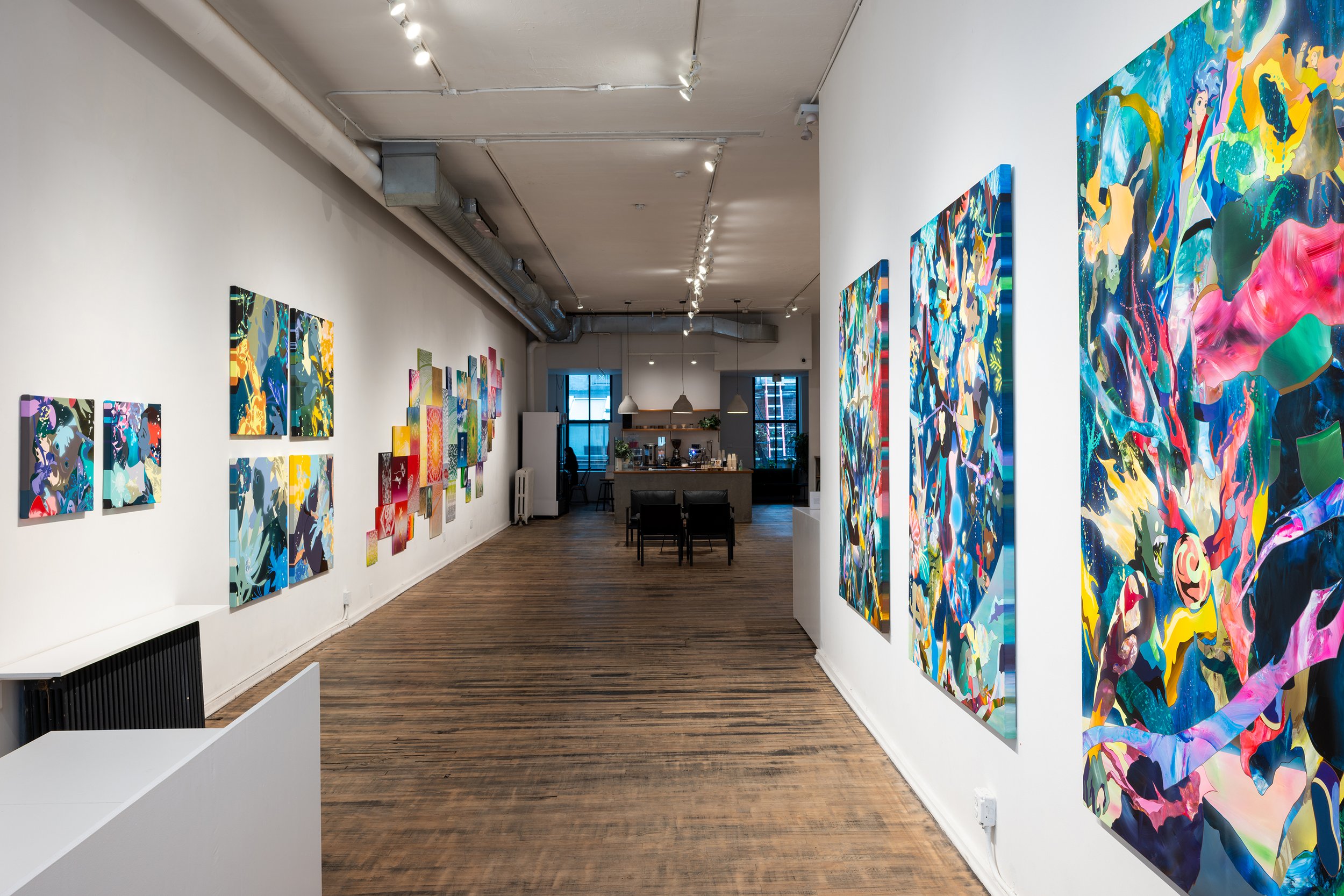
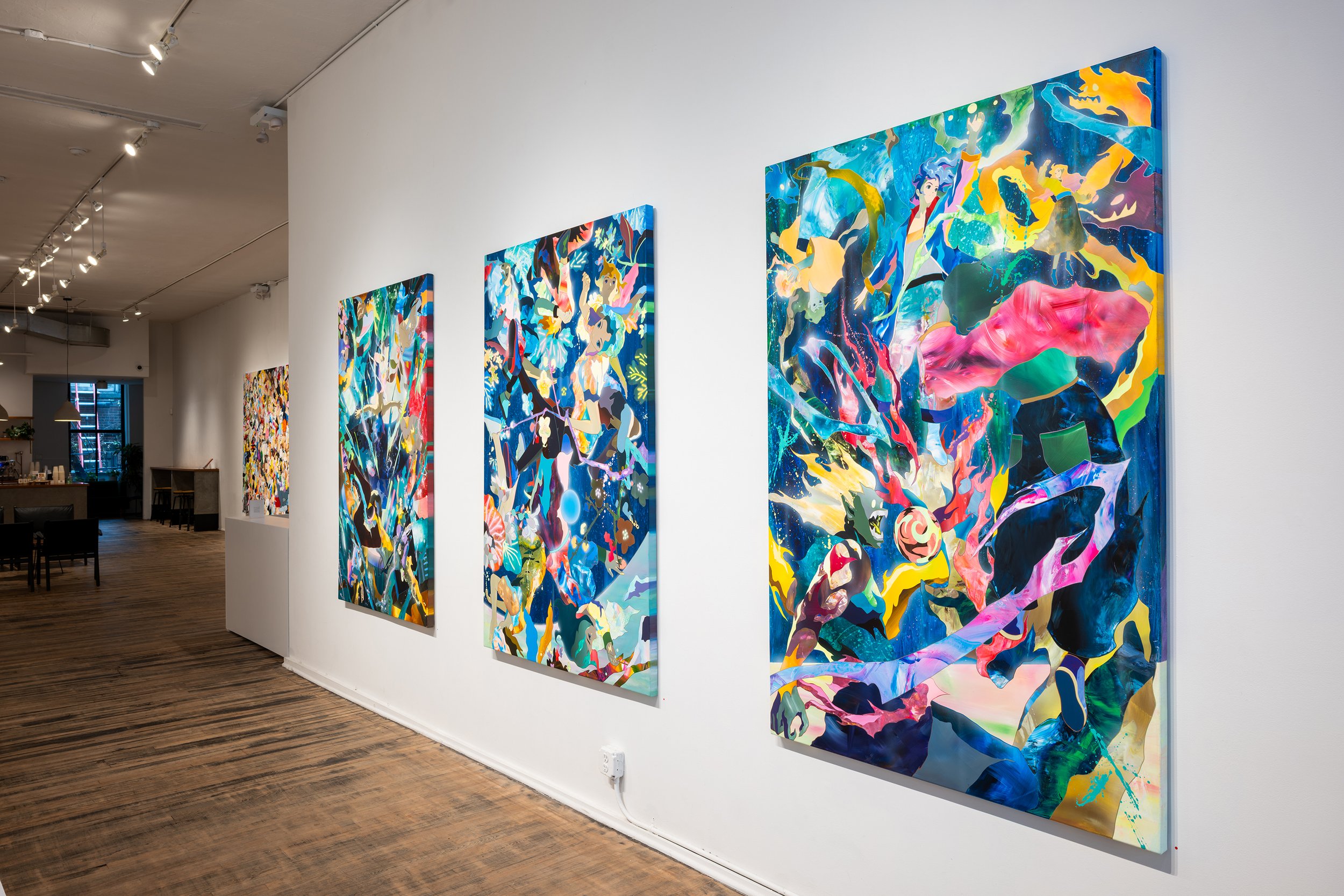
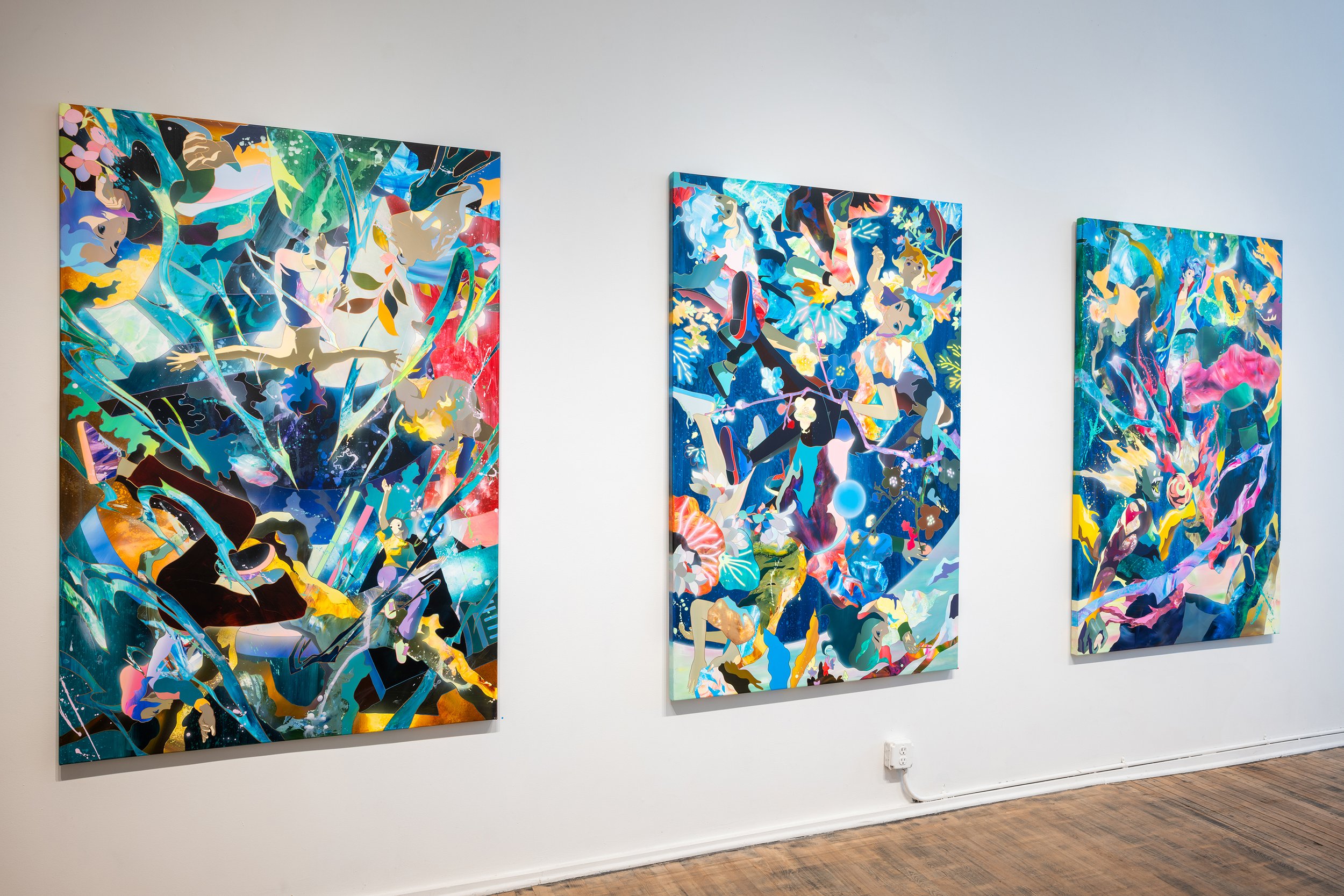
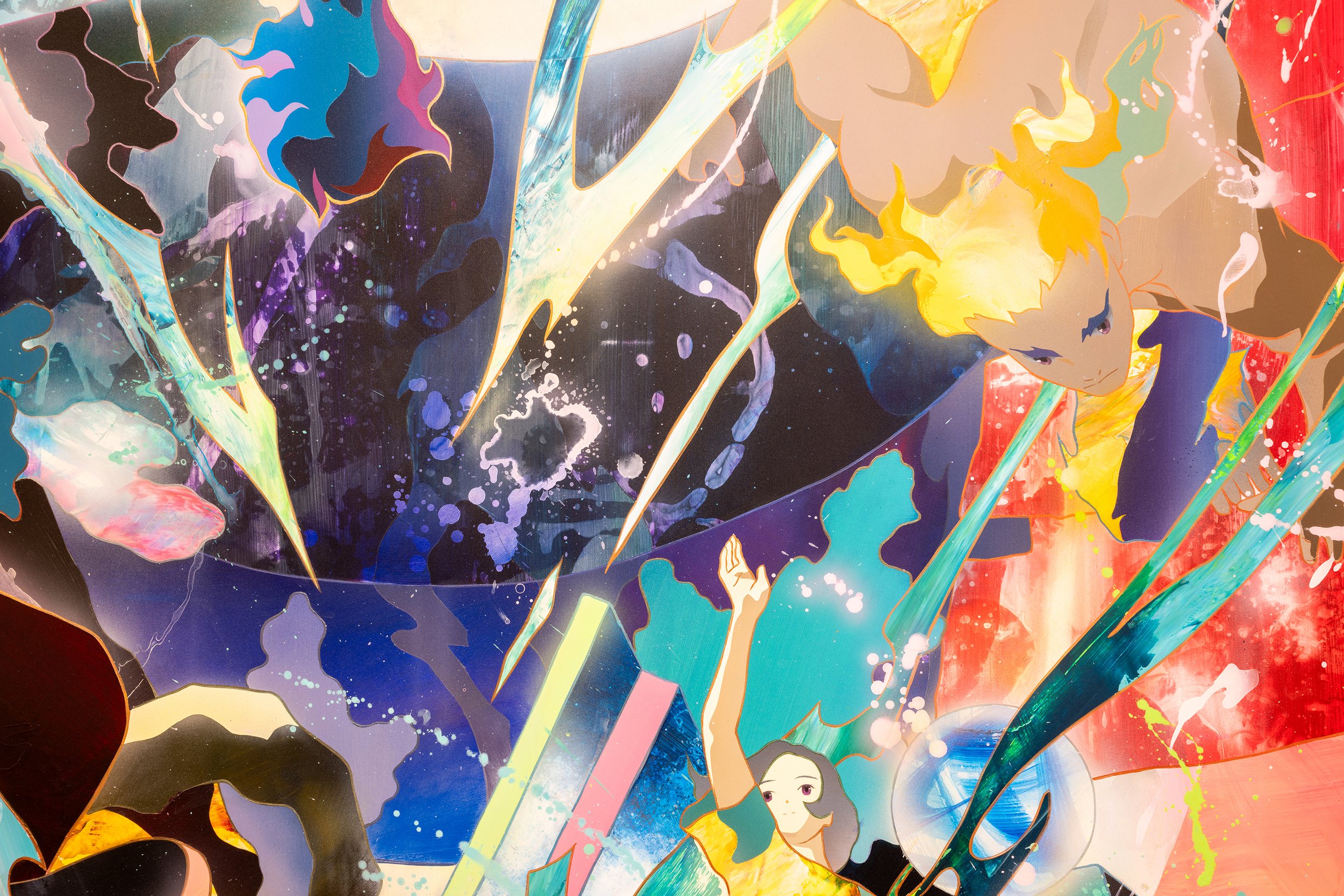
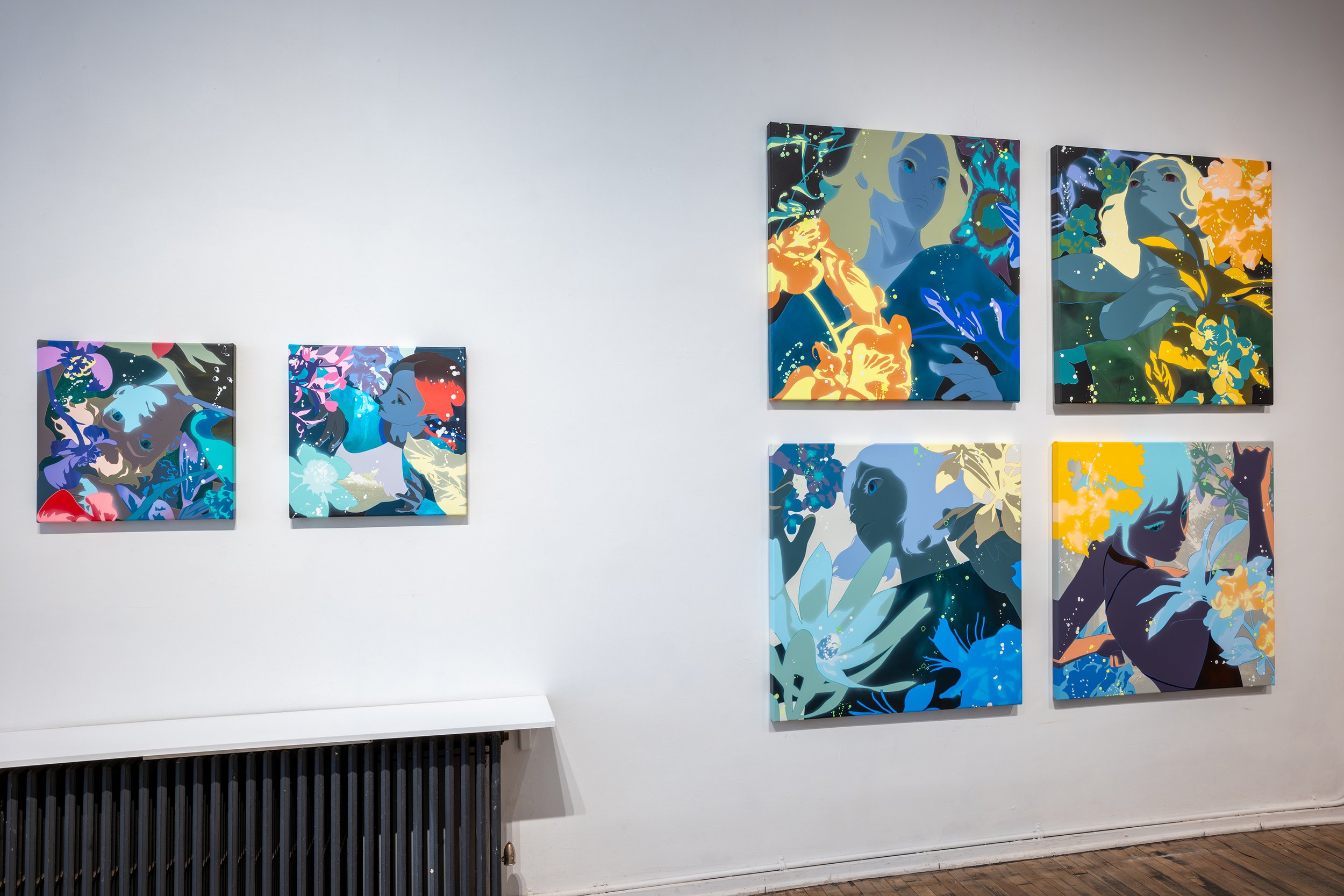
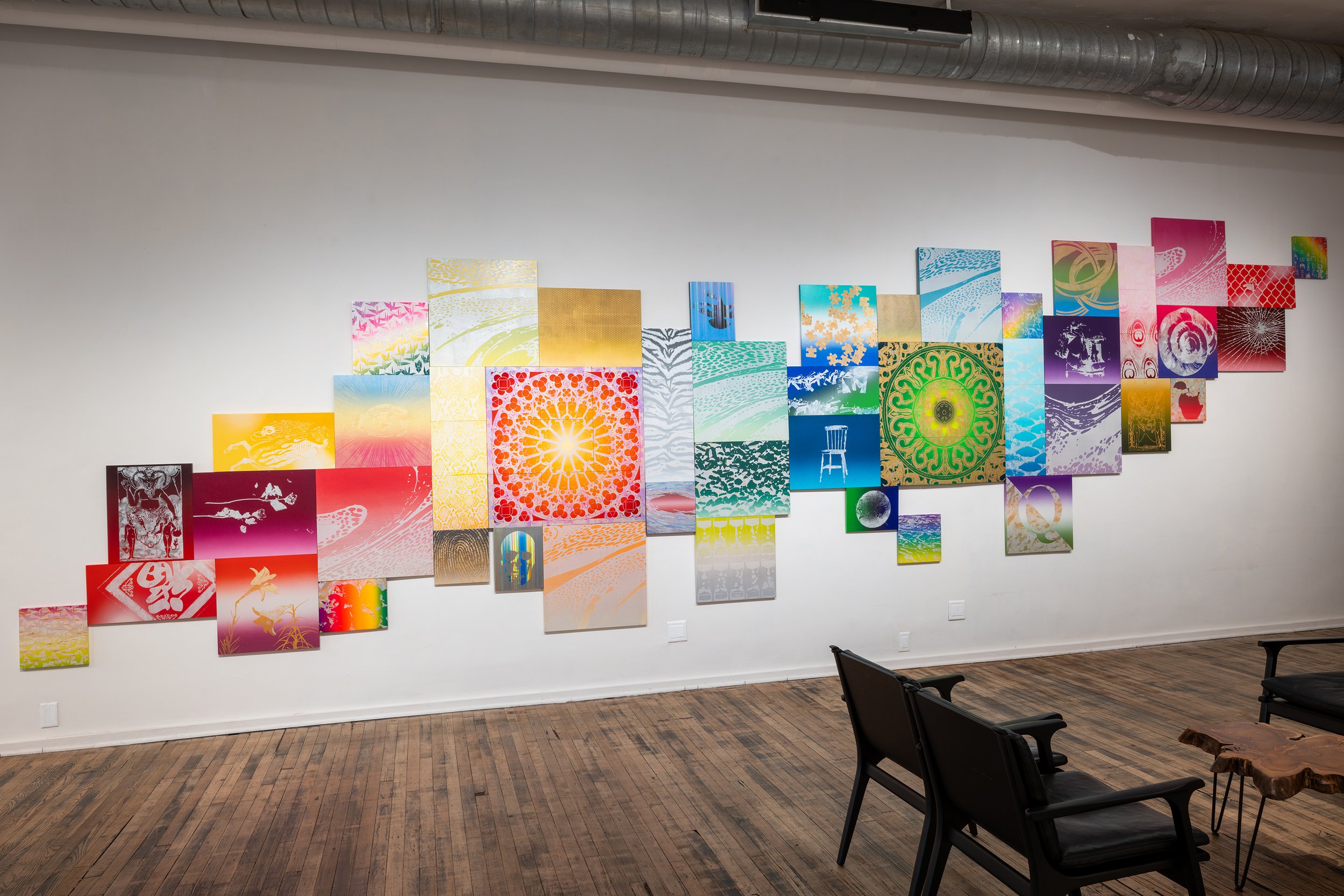
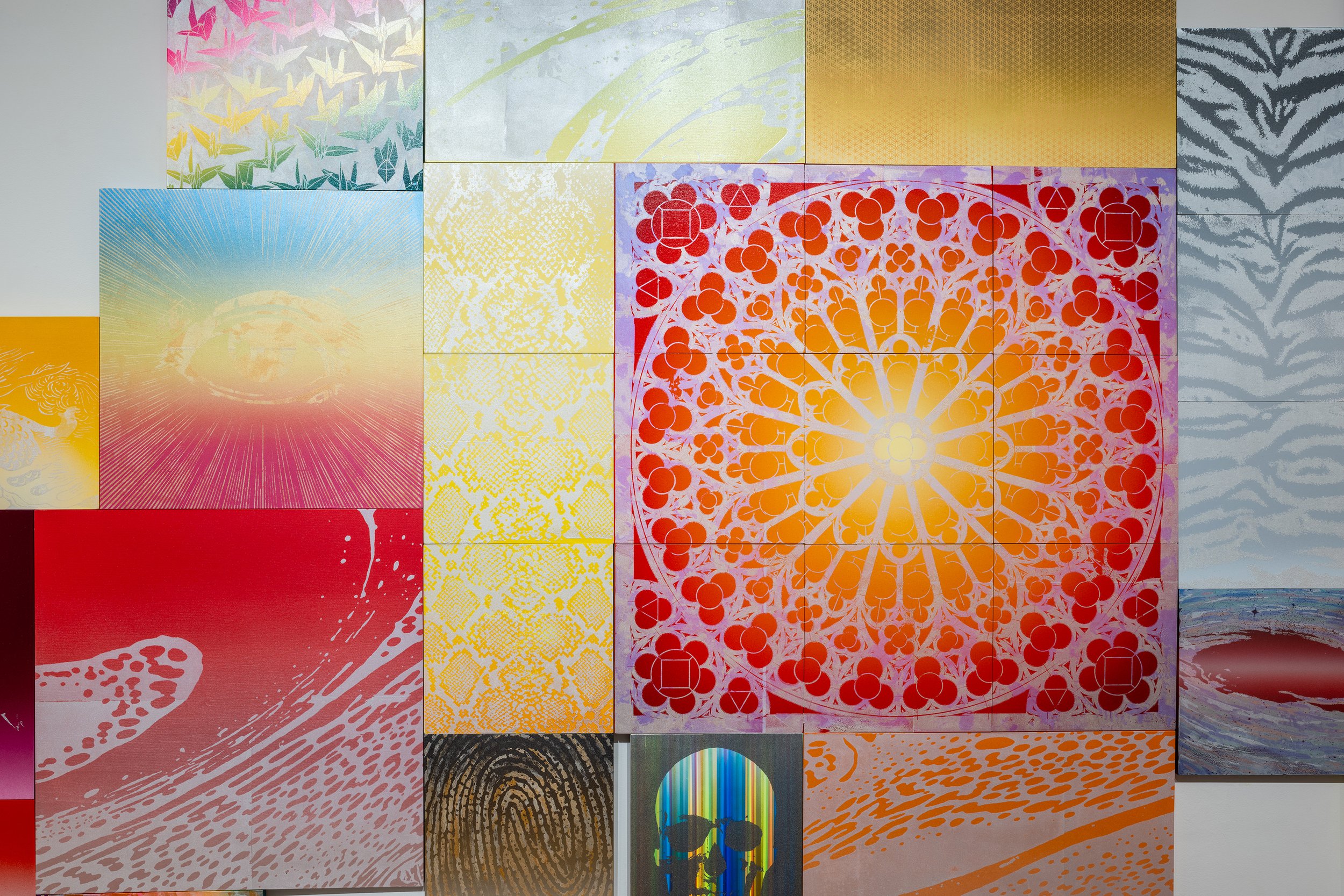
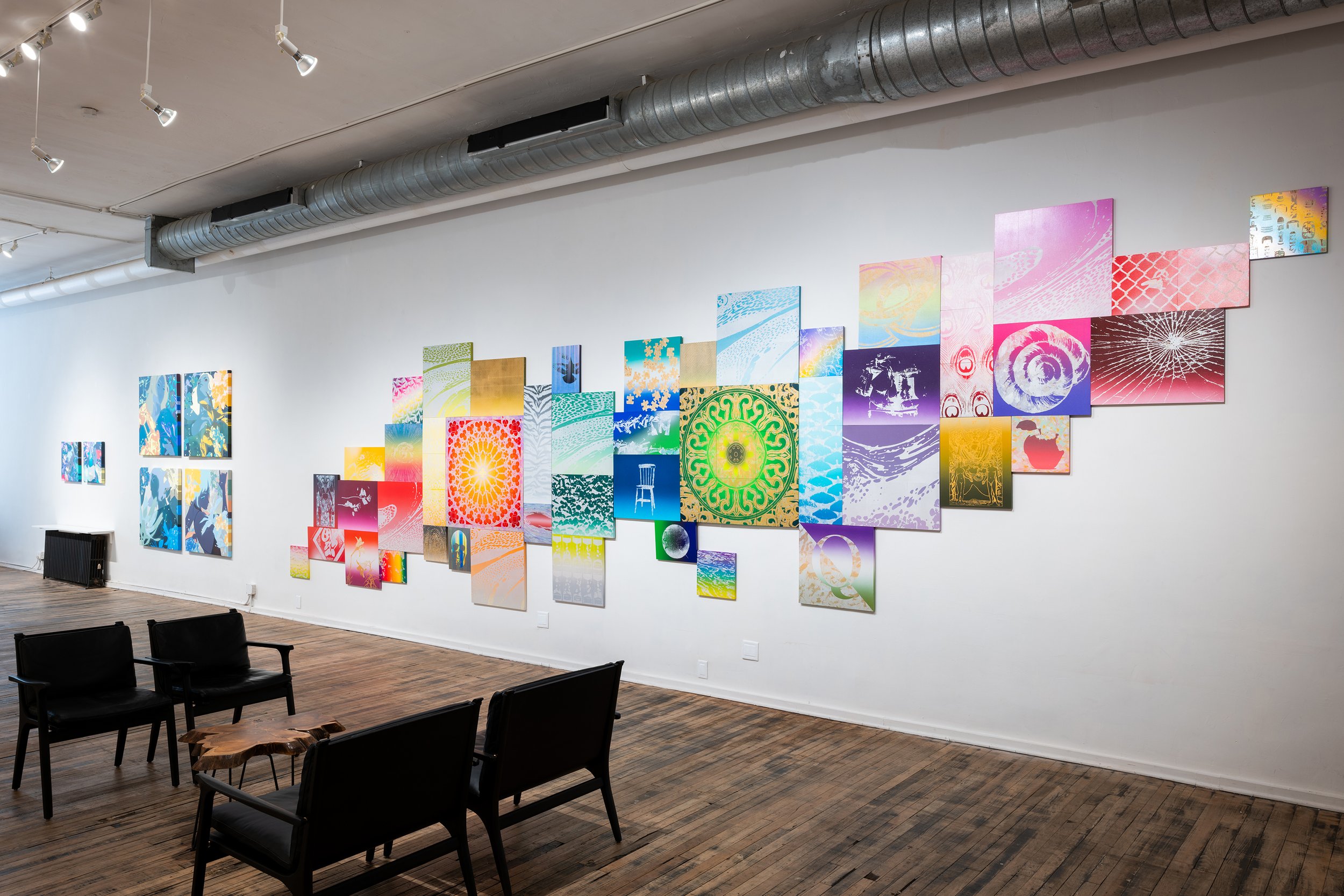

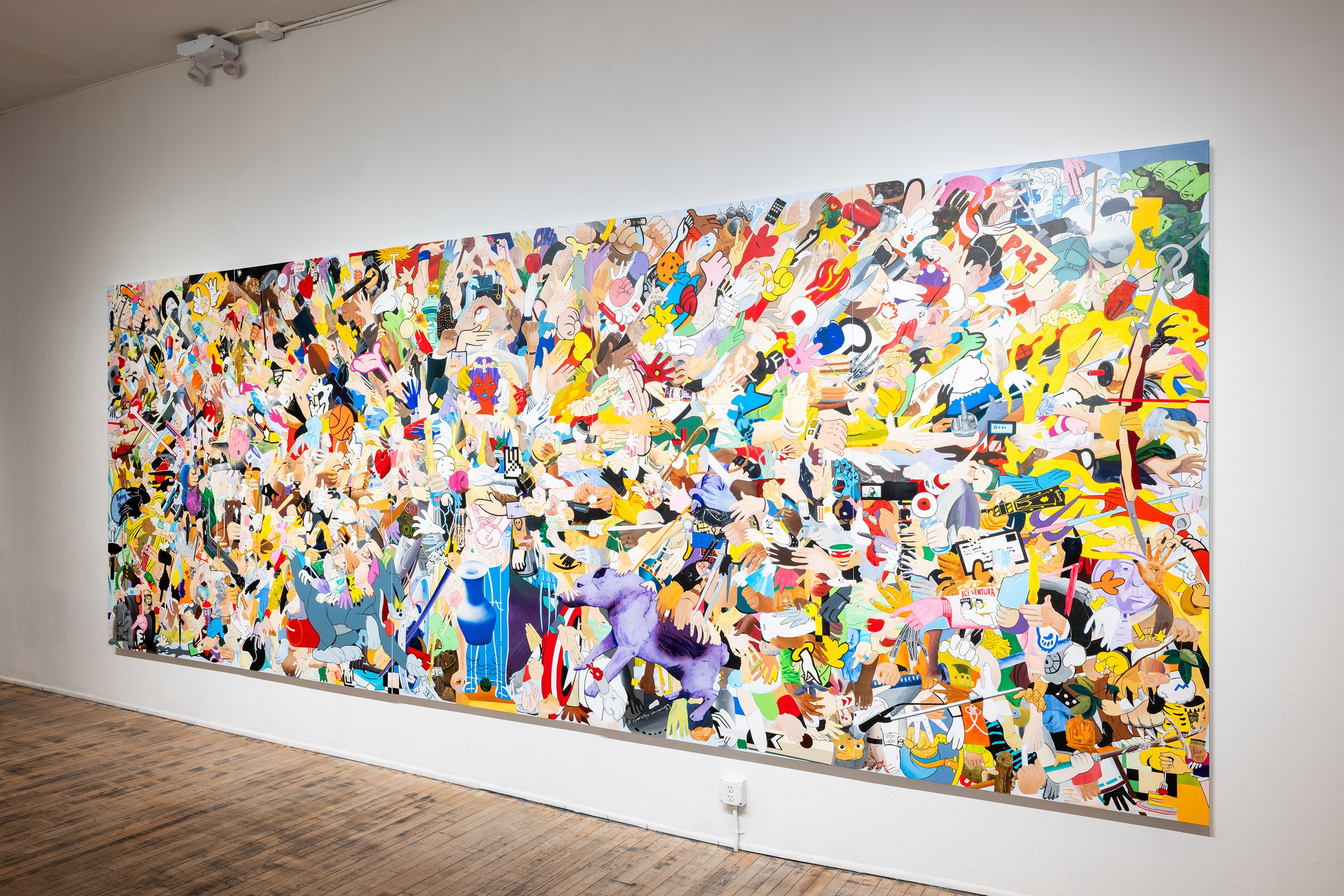

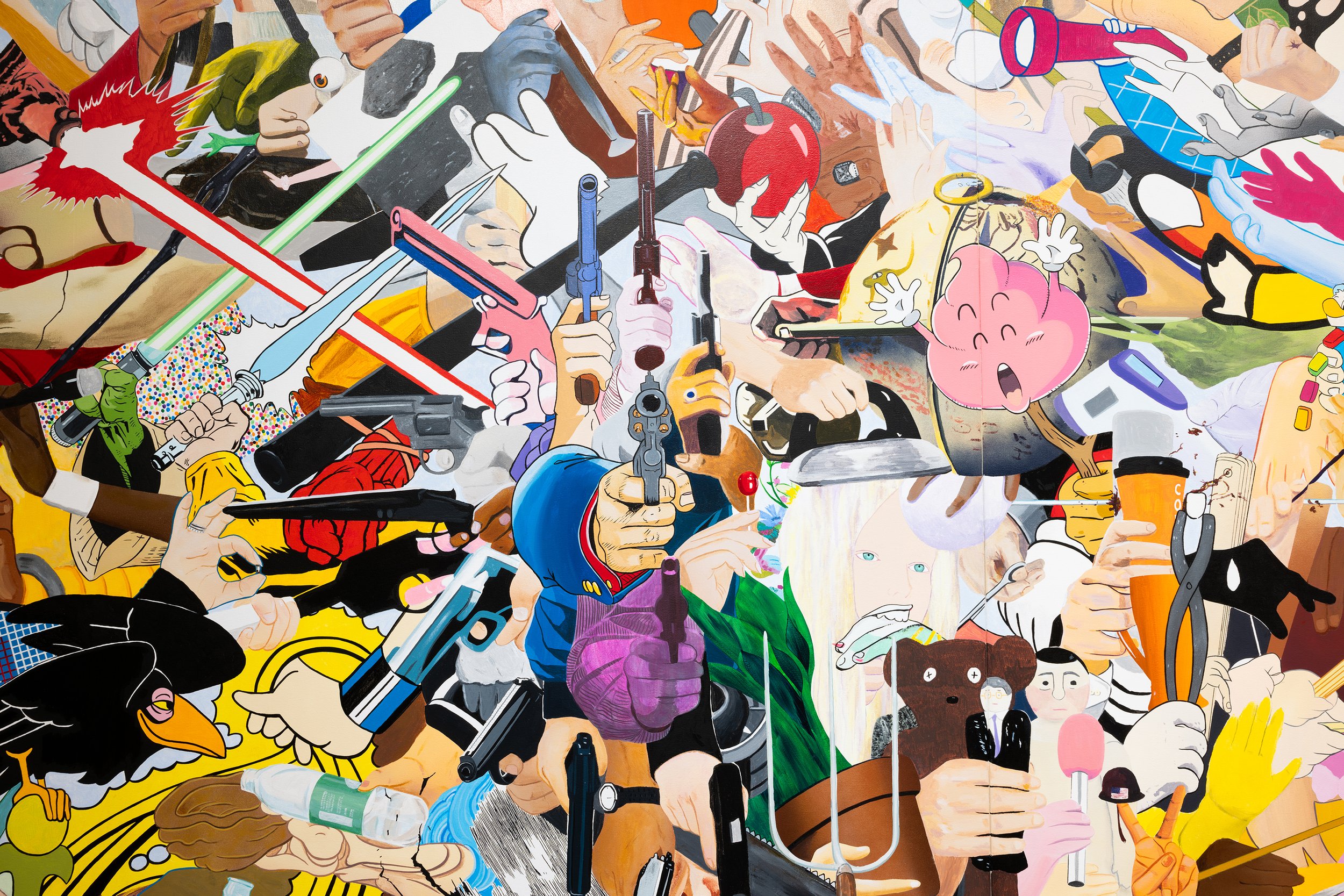
Born in Kyoto, 1985
Shingu is a graduate of the Tokyo University of the Arts, Department of Design. After quitting his job as an instructor at a preparatory school for art college entrance exams, he moved to New York City in 2021 and began creating paintings. The basis of Shingu's artwork is an exploration of the relationship between virtual space and animism. He tries to depict the presence of something akin to a spirit that can be felt in simulated digital nature, all the while using the visual language of Japanese subcultures.
Taishi Shingu
ABOUT
Born in Chiba, 1982
Onohara was influenced by graffiti culture in his teens. After entering the workforce, he gained experience in various manufacturing fields including television broadcasting production, photo labs, and construction companies. Next, he worked as a background painter for traditional Japanese theater for more than ten years. In July 2022, he moved to the United States to take on the challenge of contemporary art, utilizing the skills and experience he cultivated behind the scenes.
Kazuki Onohara
Hiroshi Masuda
Born in Saitama, 1987
In 2017, Masuda set out to travel the world. This ended, quickly and unfortunately, when he was drugged and robbed of $10,000 at the beginning of his trip. To fund the remainder of his journey, he began drawing portraits on the street. This was the beginning of his career as a visual artist. In 2018, he completed his travels to 76 countries by means of drawing and illustrations and returned to Japan. He has since moved to New York City and collaborated with Adidas Originals, Armani Exchange, Uniqlo + MoMA, and Vogue.







